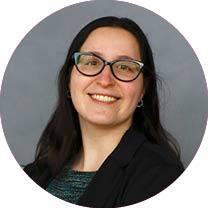George Hermann’s legacy is found throughout Houston more than 100 years after his death in 1914.
Hermann, born in Houston on Aug. 6, 1843, was a lifelong bachelor, said R.W. McKinney, commonly referred to as Mister McKinney, a local historian and owner of Mister McKinney’s Historic Houston, an open-air historic tour experience.
“He justified it, I think emotionally and mentally, by saying it was too expensive to have a wife,” McKinney said.
McKinney said Hermann knew loneliness and sadness, but also wealth, from an early age.
“He fought in the Civil War, and when he came back, both his mom and dad had died,” he said. “At this particular point, his other siblings would also pass away, and he would inherit all of their holdings as well.”
Hermann’s wealth accumulated through investments, which included the Humble Oilfields.
Hermann was diagnosed with terminal stomach cancer and would go to Baltimore to receive treatment at Johns Hopkins Hospital. In his early 40s, he traveled, including a trip to New York, where he saw Central Park.
“That’s when he really got interested in Houston needing a Central Park, just kind of touring that area. And that was kind of a nucleolus behind Hermann Park being established,” McKinney said.
According to McKinney, three months before his death on Oct. 21, 1914, Hermann made a public announcement at the City Auditorium, which was located at the corner of at Texas Avenue and Louisiana Street. He said he would be donating 285 acres of land to the city of Houston for the establishment of Houston’s own Central Park.
Hermann also shared that the rest of his fortune—$2.5 million, which equates to over $76 million in 2023—would be put toward the establishment of a hospital to serve the poor for free.
A little more than 10 years after his passing, Hermann Hospital was built on prairie land that is now part of the Texas Medical Center. The Medical Center also includes 133 acres of land originally endowed to Hermann Park that was approved for use by M.D. Anderson Hospital for Cancer Research in the 1940s.
In 1915, landscape architect and planner George Kessler was tasked with the design of Hermann Park.
Today, Hermann Park is a 445-acre urban park that welcomes roughly six million visitors each year. Hermann Park Conservancy President Doreen Stoller said the park maintains Hermann’s legacy to this day.
“He did believe in the connection between nature and healing,” she said.
A park for the future
Hermann Park Conservancy President Doreen Stoller said Hermann Park, which spans 445 acres, is continuing to grow—including a 26-acre project called The Commons, set for completion in 2024—while honoring the park’s namesake.
“We have a number of cancer patients that come and sit in the Japanese Garden after they’ve had chemo treatments just as a place to restore and refresh,” she said. “So The Commons is sort of an extension of all those themes.”
Hermann Park
6001 Fannin St., Houston
713-524-5876
www.hermannpark.org
Hours: 6 a.m.-11 p.m. daily






